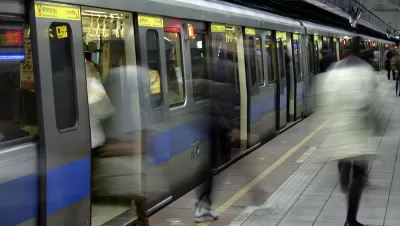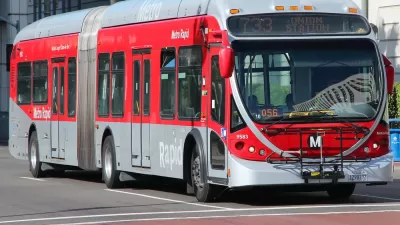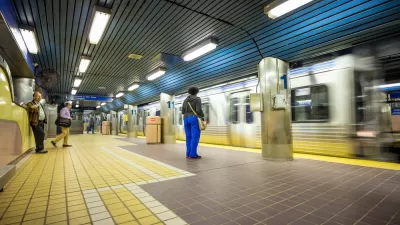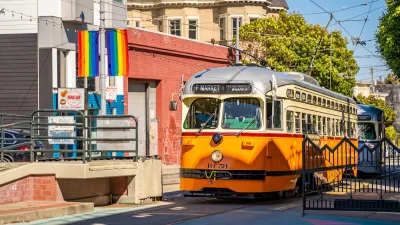Only from learning more about the choices and preferences of people who actually ride transit can transit agencies hope to better serve riders.

"Excuses abound for falling transit ridership in American cities. Transit agencies have blamed the growth of Uber and Lyft, an expanding economy, falling gas prices, and cheap car loans for recent declines in bus and rail ridership. These explanations describe real forces buffeting the nation’s transit systems, but they don’t tell the full story."
That's the premise for a post sharing new survey data from TransitCenter. The "Who's on Board 2019" report surveyed 1,700 transit riders in seven U.S. cities to ask about changing ridership habits and how transit agencies can win back riders.
The post offers insight into the changing habits of transit riders, including fewer "all-purpose riders," more competition from private cars, and low-income people moving deeper into the suburbs (and farther away from transit).
In a separate article, Angie Schmitt follows up on the report, including a few words the big idea for transit agencies trying to win back riders: better service.
FULL STORY: Who’s on Board? Riders Explain Why They’re Using Transit Less — And How to Win Them Back

Alabama: Trump Terminates Settlements for Black Communities Harmed By Raw Sewage
Trump deemed the landmark civil rights agreement “illegal DEI and environmental justice policy.”

Study: Maui’s Plan to Convert Vacation Rentals to Long-Term Housing Could Cause Nearly $1 Billion Economic Loss
The plan would reduce visitor accommodation by 25% resulting in 1,900 jobs lost.

Why Should We Subsidize Public Transportation?
Many public transit agencies face financial stress due to rising costs, declining fare revenue, and declining subsidies. Transit advocates must provide a strong business case for increasing public transit funding.

Paris Bike Boom Leads to Steep Drop in Air Pollution
The French city’s air quality has improved dramatically in the past 20 years, coinciding with a growth in cycling.

Why Housing Costs More to Build in California Than in Texas
Hard costs like labor and materials combined with ‘soft’ costs such as permitting make building in the San Francisco Bay Area almost three times as costly as in Texas cities.

San Diego County Sees a Rise in Urban Coyotes
San Diego County experiences a rise in urban coyotes, as sightings become prevalent throughout its urban neighbourhoods and surrounding areas.
Urban Design for Planners 1: Software Tools
This six-course series explores essential urban design concepts using open source software and equips planners with the tools they need to participate fully in the urban design process.
Planning for Universal Design
Learn the tools for implementing Universal Design in planning regulations.
Smith Gee Studio
Alamo Area Metropolitan Planning Organization
City of Santa Clarita
Institute for Housing and Urban Development Studies (IHS)
City of Grandview
Harvard GSD Executive Education
Toledo-Lucas County Plan Commissions
Salt Lake City
NYU Wagner Graduate School of Public Service





























